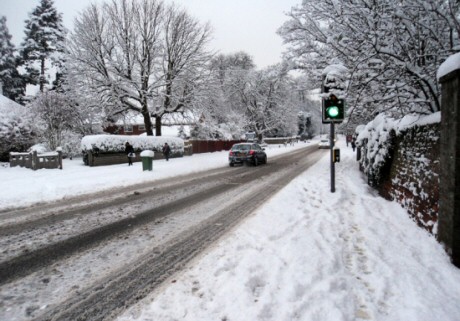Getting around safely in winter
There is clearly a responsibility on every one of us to drive with care, especially during winter weather.
You may be travelling on a road that is not part of a main gritting route or you may be on a road before it has been treated. If this is the case, slow down.
Salt spreading does not make roads completely safe; a common misconception is that rock salt will immediately disperse ice and snow and that the roads are then safe to use normally. This is not the case and traffic flows are needed to work the salt into the road surface for it to be effective. This takes time to achieve.


